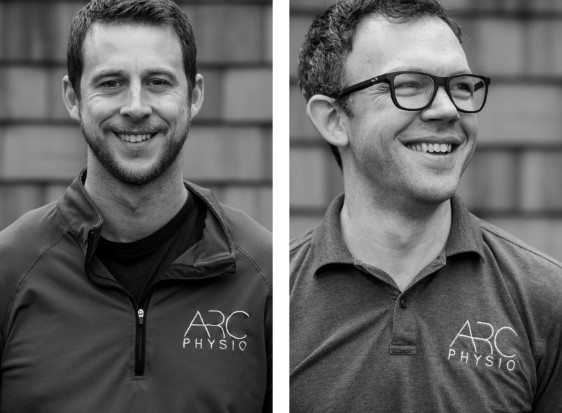Racket sports players: How to prevent injuries


By Ben Young, Accredited Strength & Conditioning Coach and James Clapp, Clinical Director, ARC Physio
Photo: Ben (left), James (right)
Racket sports, such as tennis, squash, and padel, cater to individuals of all ages and skill levels. These sports share common characteristics, and by incorporating a few key exercises into your weekly routine, you can confidently enjoy your favourite racket sport without worrying about injuries.
All racket sports involve frequent multidirectional movements, requiring the body to stop and start explosively. These rapid changes of direction subject the body to significant forces, sometimes up to 8 times your body weight. In professional tennis, players can make an average of 15 changes of direction in a single point, putting substantial strain on the body.
Racket sports also demand a comprehensive use of major muscle groups due to the whole-body, tri-planar movements involved. It’s essential to complement your on-court activities with specific exercises targeting key physical attributes needed for these sports to prevent injuries and enhance performance.
1. Hip strength
Racket sports place a significant demand on the hips and core for stabilizing the body’s centre of mass. Different court surfaces, like clay and grass, can increase demands on specific muscle groups like the adductors. Copenhagen bridges are effective exercises for strengthening these muscles. Additionally, strong glutes help stabilize the hips and prevent overuse of hip flexors and quads, which can strain the lower back.
2. Foot and ankle strength
Strengthening the ankles, particularly the ability to plantar flex (point the toes), can reduce the risk of ankle and knee injuries while improving agility. The calf muscles, especially the soleus, play a crucial role in walking and running. Isolating the soleus with calf raises helps develop ankle strength, promoting an ankle-dominant strategy that is more efficient and protective.
3. Knee strength
Racket sports involve sudden stops and starts, heavily engaging the quadriceps muscles. Weak quads can be a contributing factor to knee problems, given the high-ground reaction forces involved. Exercises like wall sits and lunges can boost quad strength and protect the knees.
4. Disassociation
In racket sports, separating lower and upper body movements is essential for generating power and stability. This separation enables the utilization of slings across the body, resulting in increased racket head speed and better motor control. The hinge exercise helps load the posterior sling by flexing and loading the hips as opposed to allowing the force to be directed through the lower back.
5. Healthy shoulders
Racket sports predominantly engage the anterior shoulder muscles, leading to imbalances in shoulder strength. Maintaining a balance between anterior and posterior shoulder strength is crucial to prevent issues like impingements, reduced upper back mobility, and elbow pain. Warm-up exercises for the posterior shoulder and targeted strength training after playing can help maintain this balance.
Remember that this is not an exhaustive list of exercises, and individual needs may vary. It’s essential to ensure you’re physically fit to perform new exercises safely.
At ARC Performance, we offer a unique service where both a physiotherapist and a strength and conditioning coach collaborate to provide performance profiling sessions. These sessions use advanced technology to identify physical limitations, create personalized programs, and provide ongoing support for injury prevention and performance enhancement.
Our mission is to make high-performance services accessible to all. For more information or to book an appointment, please visit our website.
